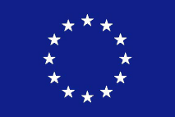→ GO TO ISECA deliverables on Earth Observation
"The monitoring of coastal and estuarine environments is becoming increasingly important due to the increase in anthropogenic pressures and the possible effects of climate change. In-situ measurements are mandatory as a result of the different European policies. But Earth Observation satellite data are available and offer a larger scale tool for understanding environmental changes that impact on coastal waters quality. Costs and processing time for satellite data are lower then the use of in-situ measurement. By integrating different observational disciplines we can begin to disentangle the complexity of the marine ecosystem."
Within ISECA a protocol will be set-up to monitor the waterquality of coastal areas using Earth Observation data. Scientists from the Plymouth Marine Laboratory (PML) are exploiting their unique capability to process EO data in near-real time in order to provide early warning of harmful algal blooms (HABs).
Earth Observation Data Acquisition and Analysis Service (NEODAAS) has the capability to automatically receive, archive, process and map global data from multiple polar-orbiting sensors in near-real time. This results in a dataportal, multiview and other dataproducts. Through this link you can find out what Earth Observation is all about: http://www.neodaas.ac.uk/.
The Natural Environment Research Council (NERC) Earth Observation Data Acquisition and Analysis Service (NEODAAS) is funded by NERC to support UK research scientists with remote sensing data and information.
The satellite data reception and acquisition is provided by the Dundee Satellite Receiving Station at the University of Dundee. Data processing is provided by the Remote Sensing Group at the Plymouth Marine Laboratory.
IN-SITU MEASUREMENTS
The Western Channel Observatory (WCO) is an oceanographic time-series and marine biodiversity reference site in the Western English Channel. In situ measurements are registered weekly using the research vessels of the Plymouth Marine Laboratory (PML) and the Marine Biological Association (MBA). These measurements are complemented by PML's recognised excellence in ecosystem modelling and satellite remote sensing science. Data is made publicly available through the website the moment of delivery (http://www.westernchannelobservatory.org.uk).
DATASETS
Click here to search our online data sets regarding eutrophication!













